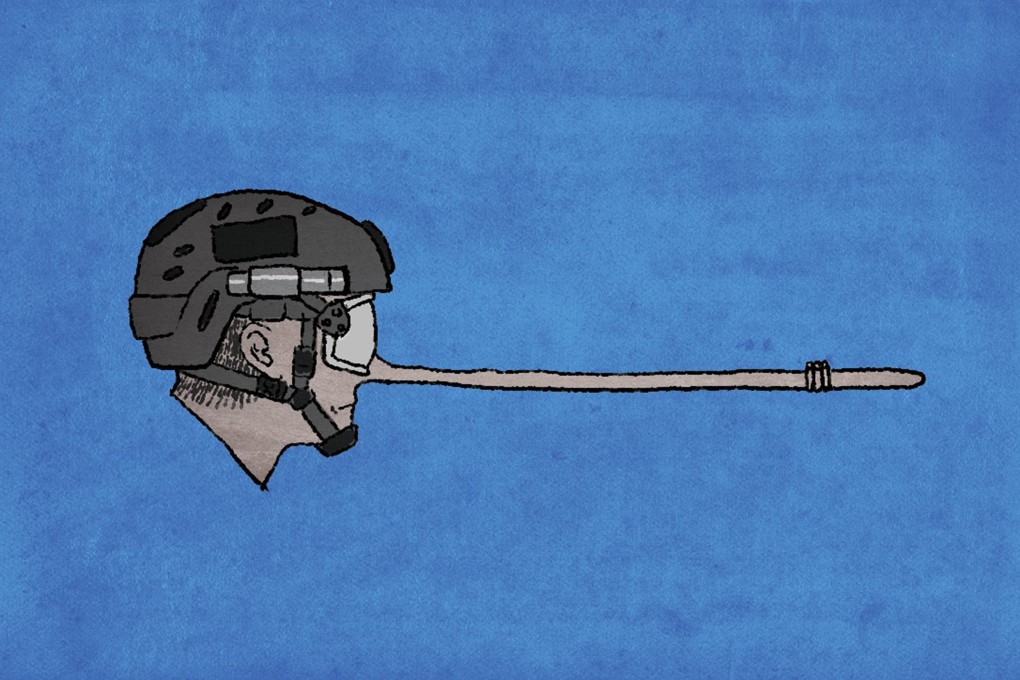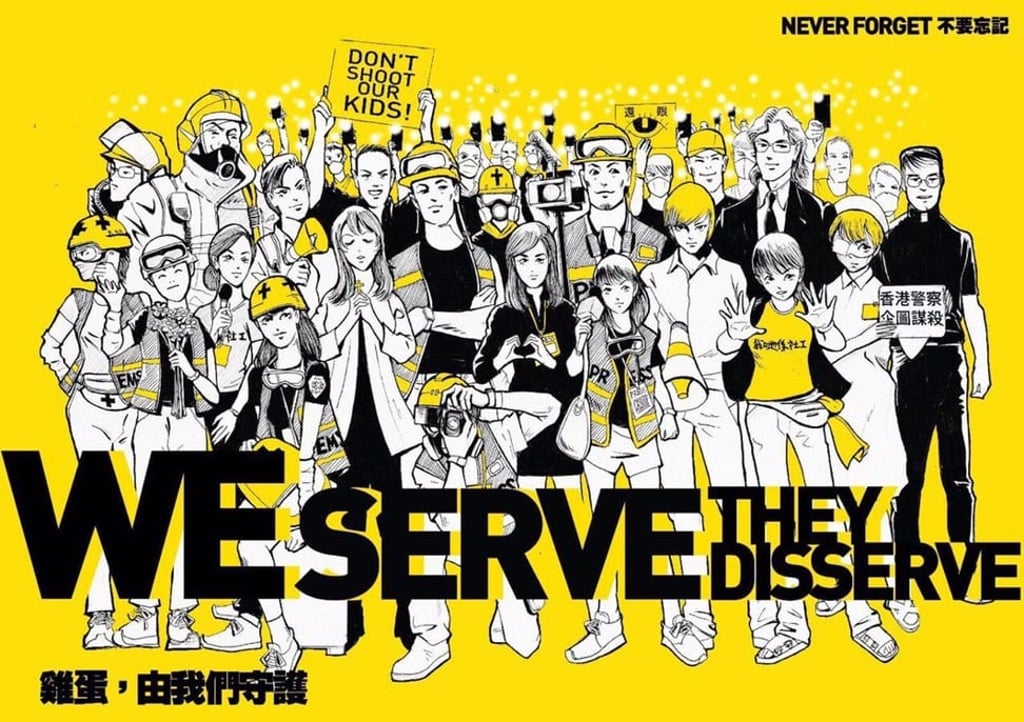Hong Kong protest art: meet the student leading the defiant design team
‘Our goal isn’t to challenge the Communist Party, just to defend our own rights and autonomy,’ says man behind the iconic bloodstained bauhinia flag that became the symbol of the 2019 Hong Kong protests

For the past 2½ months, Y has slept no more than four hours a night. Weekends have been 48-hour marathons for the university student and his team of several hundred. Many of whom he has never met.
“We knew we had an uphill battle against the government and police,” says Y. “They have a [PR] apparatus, far more resources and power to shape the discourse. We can only overpower them by sheer numbers and creativity.”
More than 5,000 members of a secret group brainstorm on the Telegram messaging app, then a team of more than 200 designers go to work translating the concepts they come up with into the sharp, subversive visuals that have come to define Hong Kong’s summer of unrest and dissent.

Then there’s also the matter of telling protesters where the protests are.